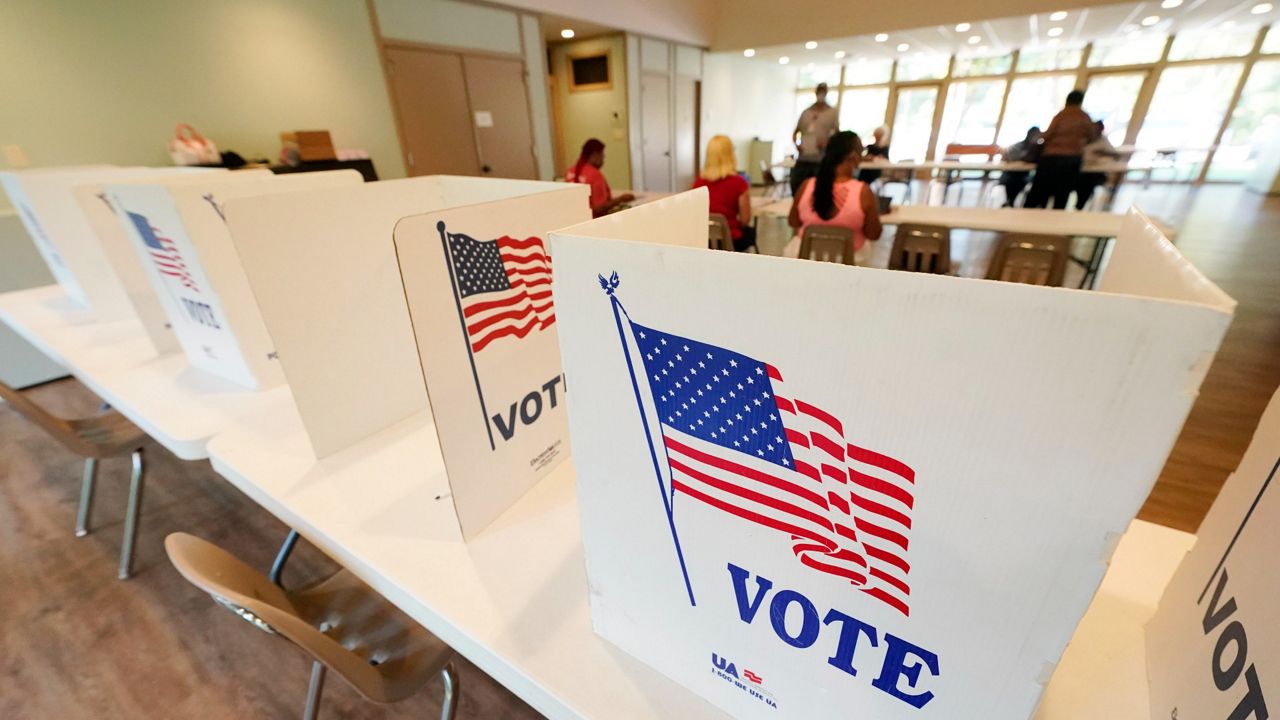New York voters head to the polls Tuesday to consider all statewide offices in Albany, a U.S. Senate seat, 26 congressional seats and all 213 seats in the state Legislature.
There are judgeships up for grabs, local ballot questions and a proposed $4.2 billion bond act for environmental infrastructure for voters to consider as well.
It's a consequential election year for New York and the country at large after more than two years of a pandemic and looming questions over the economy.
Here are five things to watch for on Election Day in New York.
1. How will New York City vote?
Republican Rep. Lee Zeldin needs to get at least 30% of the vote in New York City if he wants to unseat Gov. Kathy Hochul. Turnout in the five boroughs is being closely watched by Democrats and Republicans alike as Zeldin has sought to run an at least competitive race, seeking to draw votes from conservative Staten Island residents and from pockets of support in Brooklyn and Queens.
Hochul, a Western New York native and the first governor from upstate New York since 1921, will need to run up a big margin in New York City if she wants to be successful. That means getting support from voters in Manhattan, Brooklyn and the Bronx.
When Republican George Pataki defeated Democrat Mario Cuomo in 1994, he did so with only about 27% of the vote in the city. But New York state is a far different place now, and more heavily Democratic.
2. Will Zeldin win crossover votes?
Zeldin has run a campaign virtually on a single issue: combating crime in New York state. He holds conservative views on abortion, though has insisted he will not change New York's laws if elected. Zeldin has been an ally of former President Donald Trump, though the two have not campaigned together publicly despite an endorsement and a fundraising event at his resort in New Jersey.
Zeldin, nevertheless, hopes the crime issue is one that will bring him Democratic voters from New York City and suburban communities. Polls have shown public safety concerns have consistently ranked among the top issues with voters, regardless of their party registration.
But Zeldin will also need more than a handful of the state's six million enrolled and active Democrats, but also the lion's share of voters not enrolled in a party.
3. So goes the Hudson Valley?
This is expected to be a big Republican year across the country. Will it be a red wave or a trickle? Will it hit the shores of New York?
One potential indication of just how far and high a Republican wave might be is in the Hudson Valley, where a trio of contested congressional races are being played out: Democrat Sean Patrick Maloney versus Republican Mike Lawler in the 17th District, Republican Colin Schmitt versus Democrat Pat Ryan in the 18th District and Democrat Josh Riley versus Republican Marc Molinaro in the 19th District.
The Hudson Valley has become one of the fastest growing regions of New York and its demographics have been reshaped by people who have left New York City amid the pandemic.
Either party winning at least two of these races would be a good night. A sweep by one party would spell potentially deep trouble for the other.
4. The ballot question
New York's long-gestating proposal to borrow billions of dollars to help fund environmental infrastructure projects for waterways and sewers as well as electric vehicle charging stations and land use programs was first announced in 2018. It was delayed by the COVID-19 pandemic and has since become a $4.2 billion plan.
Proponents of the bond act nervously watched last year when constitutional amendments for absentee voting and voter registration as well as redistricting changes favored by Democrats went down in flames after an effective campaign by the state Conservative Party.
This year, environmental organizations and labor unions supportive of the bond act have launched a campaign to urge voters to cast yes ballots. So far, no sizeable opposition to the bond act has been made.
5. The paths to victory
For Hochul: Run up a big vote tally in New York City, especially in Manhattan and among Black voters in Brooklyn while also winning the northern New York City suburbs. Upstate cities like Buffalo, Rochester, Syracuse and Albany could also be helpful to her.
For Zeldin: Overwhelming turnout for Republicans in his home county of Suffolk as well as neighboring Nassau County and remain competitive in New York City by getting more than 30% of the vote.
Whoever wins Tuesday's race will make history. Hochul would be the first woman elected to the job in New York. Zeldin would be only the third Jewish governor in the state's history and, at 42, would be its youngest since Thomas Dewey in 1943.
Bonus: The state Legislature
Democrats in Albany hold supermajorities in the state Senate and state Assembly, muscle they can flex during the legislative session and during the budget talks, when the governor otherwise holds a lot of power.
But Democrats this year also defending "marginals" -- lawmakers in swing districts in areas like the North Country, Long Island and the Hudson Valley -- that could put the supermajorities at risk.
The state Senate, once a Republican seat of power in an increasingly Democratic New York, could see gains made by the GOP, especially in the New York City suburban districts.



